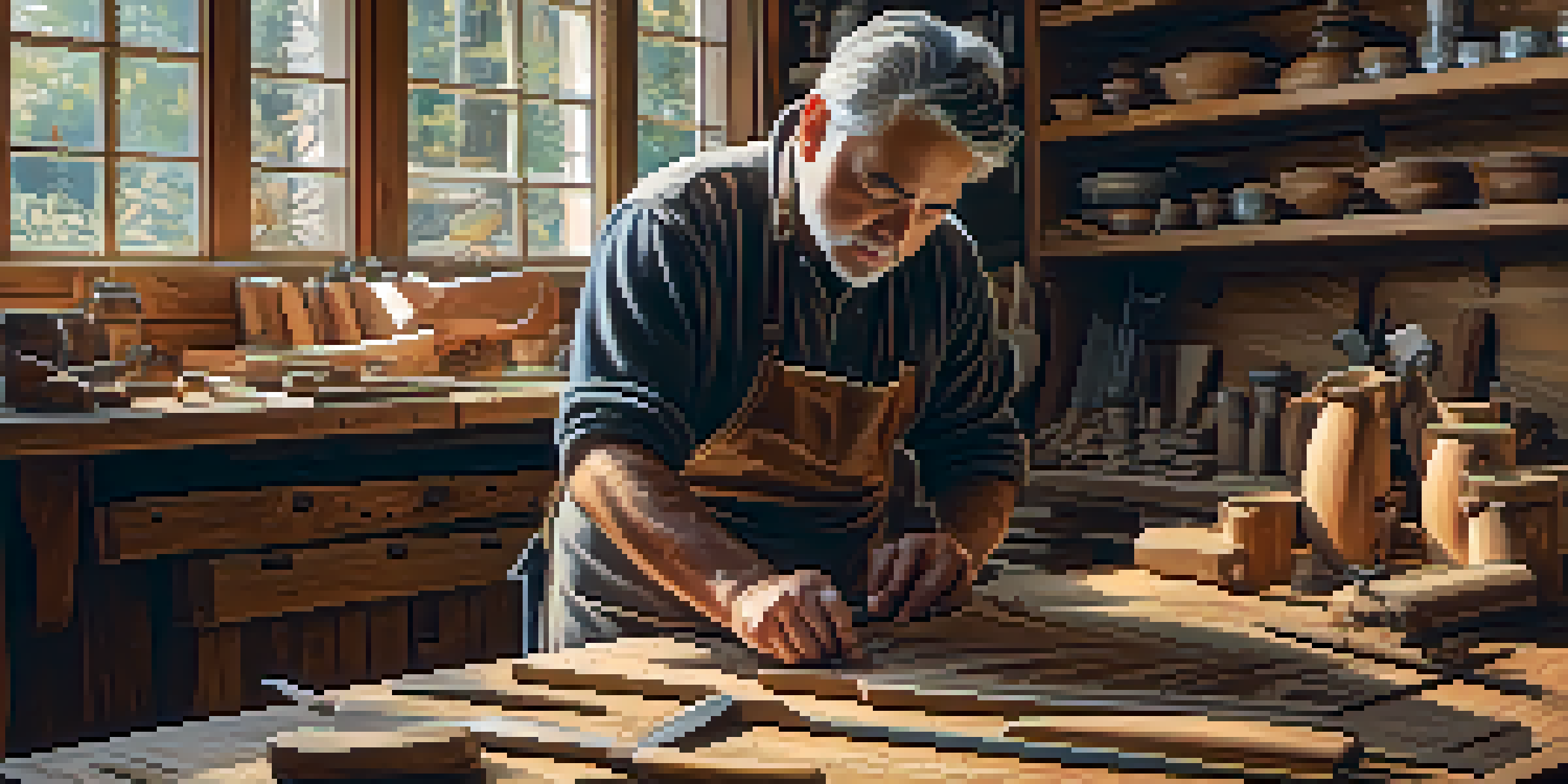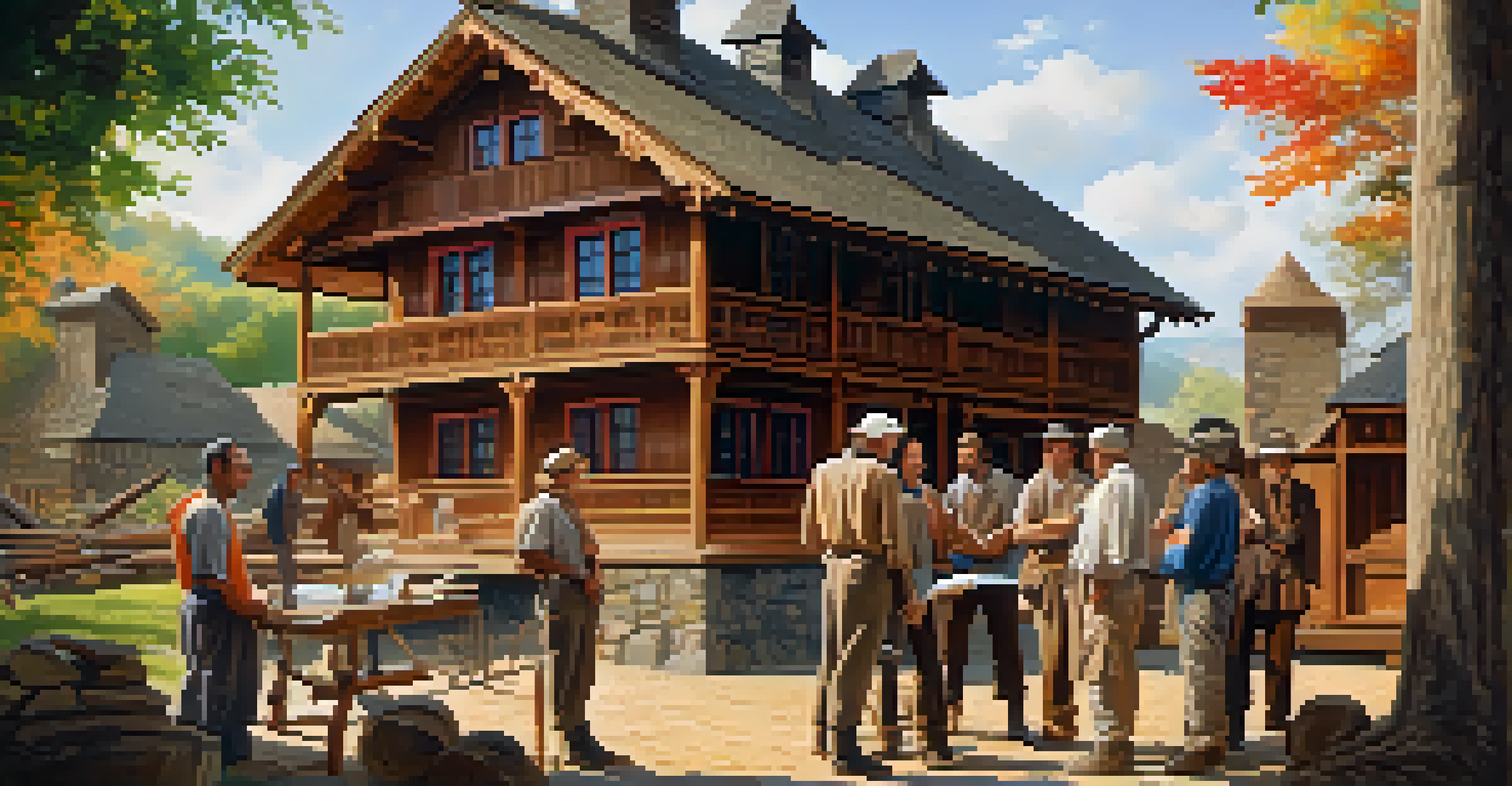The Role of Carving in Cultural Heritage Restoration Projects

Understanding Cultural Heritage and Its Importance
Cultural heritage encompasses the traditions, artifacts, and practices that define a community's identity. It includes everything from ancient buildings to folk customs that have been passed down through generations. Preserving this heritage is vital, as it not only connects us to our past but also enriches our present and future.
Preservation of our cultural heritage is not just about saving the past; it is about securing our future.
With globalization and rapid urbanization, many cultural heritages are at risk of being lost. Restoration projects help to safeguard these legacies, ensuring that they remain intact for future generations. By investing in cultural heritage, we celebrate our diversity and foster a sense of belonging within communities.
The role of skilled artisans, particularly carvers, becomes crucial in these projects. They possess the unique ability to restore intricate designs and details that are essential to the authenticity of cultural artifacts and structures.
The Art of Carving: A Timeless Skill
Carving is an ancient craft that has been practiced in various forms across cultures around the world. From stone sculptures to wooden artifacts, carving transforms raw materials into art that conveys stories and meanings. This skill requires not only talent but also a deep understanding of the material being worked with.

Traditionally, carving was a communal activity, often associated with rituals and ceremonies. Today, while modern techniques have emerged, the essence of traditional carving remains vital in heritage restoration. The meticulous process of carving helps maintain the integrity and historical significance of the objects being restored.
Cultural Heritage Needs Preservation
Preserving cultural heritage is vital for connecting with our past and enriching our future.
Carvers often draw inspiration from the original designs and techniques of their ancestors, bridging the gap between past and present. By honoring these traditional methods, they ensure that the cultural significance of the work is preserved.
Carving Techniques in Restoration Projects
In restoration projects, various carving techniques are employed depending on the material and the object being restored. For example, stone carving may involve chiseling, while wood carving could utilize tools like gouges and knives. Each technique has its own set of challenges and requires a different skill set.
Art is the most beautiful of all lies; it is a way to capture the essence of our history and identity.
Moreover, restorers must be well-versed in the history and context of the pieces they are working on. This knowledge allows them to make informed decisions about which techniques to use and how to approach the restoration. It’s a delicate balance between preserving history and ensuring functionality.
Authenticity is key in restoration, and skilled carvers play a vital role in achieving this. Their expertise ensures that the finished product reflects the original craftsmanship, allowing future generations to appreciate the artistry and significance of the cultural heritage.
Challenges Faced by Carvers in Restoration Work
Carvers involved in cultural heritage restoration often face numerous challenges. One significant issue is the deterioration of materials over time, which can make restoration difficult. Carvers must assess the condition of the artifact and decide how best to proceed without compromising its integrity.
Additionally, sourcing the right materials can be a daunting task. Finding stones or wood that match the original can be challenging, as many traditional sources may no longer be available. Carvers often have to get creative, using modern materials while still adhering to traditional techniques.
Carving Bridges Past and Present
Skilled carvers play a crucial role in restoring artifacts, ensuring authenticity and historical significance.
Time constraints can also pose a challenge, as restoration projects often operate on tight deadlines. Balancing quality work with time limitations requires not only skill but also strategic planning and effective project management.
The Collaborative Nature of Restoration Projects
Cultural heritage restoration is rarely a solo endeavor; it involves a team of experts working together. Carvers often collaborate with historians, architects, and conservationists to ensure that every aspect of the restoration is considered. This multidisciplinary approach enriches the project and enhances the final outcome.
Communication is key in these collaborations. Each team member brings unique insights and expertise, and sharing knowledge helps to create a cohesive restoration plan. Carvers rely on historians to provide context and significance while conservationists help monitor the preservation of the materials used.
This team effort not only leads to more successful restorations but also fosters a greater appreciation for the cultural heritage being preserved. By working together, these specialists help create a lasting legacy for future generations.
Case Studies: Successful Restoration Projects
Several successful restoration projects highlight the crucial role of carving in preserving cultural heritage. One notable example is the restoration of the intricate carvings of an ancient temple that had suffered severe weather damage. Skilled carvers painstakingly recreated the original designs, allowing visitors to appreciate the temple's historical beauty.
Another inspiring case is the restoration of traditional wooden houses in various communities. Here, carvers not only repaired structural damage but also revitalized the artistic elements that made these homes unique. Such projects serve as a reminder of the importance of craftsmanship in cultural identity.
Collaboration Enhances Restoration
Successful restoration projects rely on collaboration among various experts to create a cohesive preservation plan.
These case studies demonstrate that effective restoration is a blend of skill, knowledge, and passion. When carvers succeed in their work, they not only restore objects but also revive the stories and traditions that these artifacts represent.
The Future of Carving in Cultural Heritage Restoration
As we look to the future, the role of carving in cultural heritage restoration will continue to evolve. With advancements in technology, new tools and methods are emerging, allowing for more precise and efficient restoration processes. However, the core principles of traditional carving remain essential.
Educational programs that focus on teaching young artisans the art of carving are crucial for sustaining this craft. By passing down knowledge and skills, we can ensure that future generations understand the importance of cultural heritage and the role they play in preserving it.

Ultimately, the future of carving in restoration lies in striking a balance between innovation and tradition. As we embrace new techniques, we must also honor the time-honored practices that define our cultural identity.